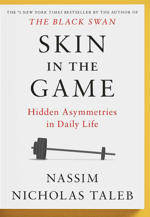The Grinch who planned Xmas Mustering Crocko Mojo

From Chaos Goblin to Holiday Overachiever: A Personal Holiday Horror reincarnation. "It’s Alive!"
As a kid, I operated exclusively on the principle of panic-based productivity. Planning ahead? Never heard of her. She sounded exhausting.
Take Halloween. Other kids spent weeks crafting costumes so intricate the Smithsonian could display them. Meanwhile, I woke up on October 31st like, Ah yes… today I will become something. And by “something,” I mean “a last-minute crisis in fabric form.” Left to my own devices, my costumes sucked.
One year, I wrapped myself in a towel and called it a snake charmer. It rained. I became a soggy disappointment.
Packing for summer camp was no better. While normal children packed DAYS in advance, I scraped socks and underwear off the floor: stuff I needed was set aside for useless stuff didn’t have a plan for. I would cram my kit into a duffel bag. I must have had a convincing air of competency because no one checked my work. flashlight, socks, toothbrush—but somehow remembered to pack three books I would not read and ski pants, no swim trunks.
And school? Oh, sweet mercy. I wrote term papers with the speed and strategy of someone trying to defuse a bomb using only a pen and rising panic. My entire academic career was held together by adrenaline and the grace of teachers who were too tired to argue with me.
Fast-forward several decades.
I am now an elderly adult man. I make 47 distinct old-people noises when standing up. I own walking shoes with sporty-sounding arch support. And I have partnered with my husband—who is equally elderly, equally creaky—in becoming something I NEVER imagined:
A person who plans holiday decorations WEEKS in advance.
Not only that… we’ve become PRE-THANKSGIVING people. You know, the ones who are out in the yard before the turkey is even purchased, untangling cords like we’re performing festive electrical surgery.
I don’t know who we are anymore. We set up a crafting station for Christ's sake!
I don’t know when the transformation happened. We used to work in catering and putting on parties for other people's houses in Los Angeles for the holidays. So, the last thing we wanted was to decorate our own place; it was too much like work. This year, we are settled enough into semi-retirement that we need an outlet for our creative juices. I only know that it began with our “slapdash” Halloween display.
We threw up some cellophane and cardboard ghosts. A couple of paper bats. The kind of effort that says, “We tried, but also… did we?” I thought it turned out… swell. Our seasonal contribution to the building was a success. I thought that would be it. In Hollywood, Halloween is a big deal. Christmas, not so much. People take off for the holidays. The place is a ghost town. But no—Halloween was merely the trailer for the full-length holiday blockbuster we are apparently preparing now. It was really a proof of concept that we could run lighting and string a festive diorama in a three-story courtyard.
Suddenly, we have a PLAN.
We have concepts of a plan.
We have a designated bag for extension cords, which is how you know things have gone too far. I made cardboard cutouts of oversized sugar cookies that need to be painted, decorated, and hung.
My childhood self, still wearing damp papier-mache masks, would be so impressed. Who are you?
But here I am, sitting out in the cold, a week before Thanksgiving, hand-painting cardboard cutouts that still need a second coat of paint like I’m auditioning for a reality show called America’s Next 2XLT Yard Elf. I imagine my dad doing something similar, but with way better results than mine. Maybe if I wear his wool hat while I toil, I can muster some of that Crocko Mojo.
We measure things now.
We had a planning meeting about the power of all things.
We have an entire conversation/frustrated about what outlets are already on a timer, yet no one cries.
Honestly, the person I’ve become is unrecognizable—except for the part where something will still, inevitably, go wrong like a big wind storm with an atmospheric river of doom, and we’ll both end up in the courtyard yelling, “WHY IS THIS CORD WET?”
But you know what?
I think I’ve earned this upgrade. I should be smart enough to know better. Planning is a good thing. After decades of barely scraping through holidays by the skin of my untaped construction-paper ears, I’m embracing this new life of preparedness. I missed being an Eagle Scout only because I ran out of time to apply. Not prepared much.
Somewhere deep inside, my chaotic younger self whispers, Who ARE you?
And I whisper back:
Someone with 3 pre-lit plastic Christmas trees and the power of foresight.
What am I reading this week?
Skin in the Game by Nassim Nicholas Taleb

Nassim Nicholas Taleb’s Skin in the Game: Hidden Asymmetries in Daily Life is part philosophy, part economics, part cranky uncle at Thanksgiving—and fully Taleb. It’s the fourth installment in his Incerto series, and like its predecessors, it delivers a blend of big ideas, sharp insights, and a few well-aimed intellectual slap-downs.
At its core, the book argues something deceptively simple:
People should bear the consequences of their decisions.
Your risk should be your own—not something you outsource to strangers, systems, or unlucky bystanders. Whether you’re a politician sending others to war, a banker gambling with someone else’s savings, or a “thought leader” dispensing advice you don’t personally follow, the absence of personal risk creates distortions, injustices, and—Taleb’s favorite word—fragility.
What Works
1. Taleb’s clarity on asymmetry.
He breaks down how certain people (bureaucrats, forecasters, corporate executives) enjoy upside but avoid downside. The examples are both illuminating and, occasionally, infuriating in exactly the way he intends.
2. Memorable principles.
Ideas like “minorities rule,” “skin in the game as a filter for bullshit,” and “ethics built on symmetry” stick with you long after you put down the book. He has a rough character with a goodfellas personality who likes to say "forget about it."
3. Accessible storytelling.
Love him or not, Taleb is a gifted explainer. His blend of anecdotes, historical references, and personal tirades makes the book lively rather than textbook-dry. I like to say he is the kind of writer with a dizzying intellect. I am on my 3rd read and still grasping at what is serious and what is poking fun.
What Might Annoy You (Unless You’re Already a Taleb Fan)
1. The tone.
Taleb writes like he’s simultaneously lecturing you, arm-wrestling you, and making fun of your shoes. Some readers love the swagger; others find it grating. I lean towards straight laced, so I lean into his bravado and strong opinions to make room for growth.
2. Grudges, score-settling, and wandering detours.
Taleb occasionally uses pages of valuable book real estate to roast economists (he hates economists), journalists, and anyone else who has irritated him since 1983. It’s entertaining but not always essential.
Who Will Enjoy It
- People who like systems thinking, probability, ethics, or risk
- Fans of contrarian nonfiction
- Readers who appreciate strong opinions delivered at high velocity
Who Might Not
- Readers who prefer gentle, diplomatic prose
- People are allergic to authorial personality in nonfiction
- Anyone looking for a straightforward economics text
Verdict
Skin in the Game is provocative, challenging, sometimes abrasive, often brilliant, and rarely boring. It’s a book that makes you rethink not just how society works, but how you yourself behave—whether you take risks, avoid them, or unwittingly impose them on others.
If you enjoy authors who write like they’re five espressos deep and slightly disappointed in humanity, this is your book.
My big takeaway. Regular people lined up behind Donald Trump because he shows his flaws, like a real person. The democrats need to run a candidate who shows their flaws.
